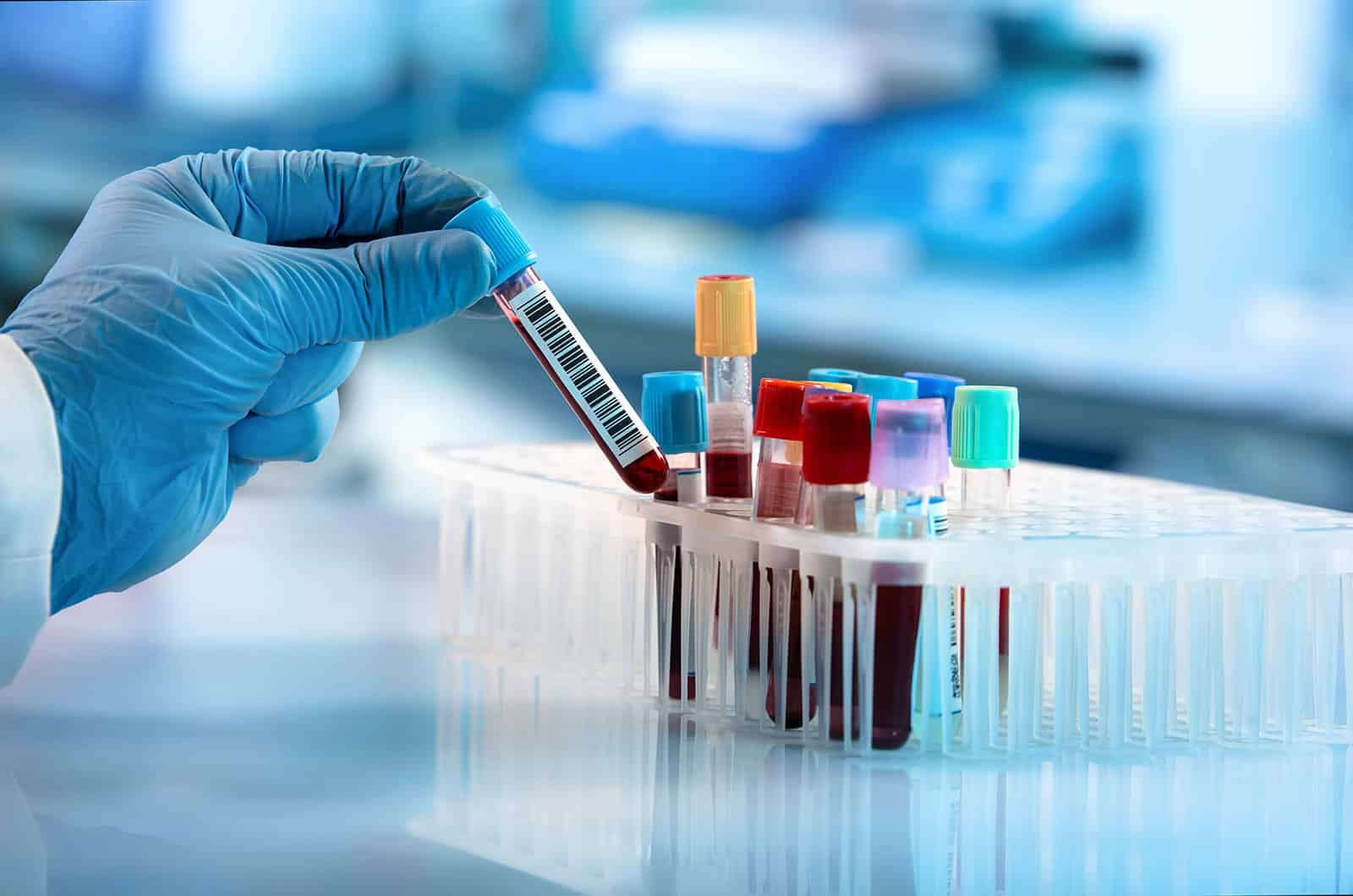
How Far Back Does a Lab Urine Test Go?
Home » Blog » How Far Back Does a Lab Urine Test Go?
Have you ever wondered how long a substance stays detectable in your system after use? Well, this is a fairly common question for people who need to undergo a drug screening, particularly a lab urine test.
While it may seem like a simple question, the answer can be quite tricky, as the detection window can vary depending on a huge variety of factors.
In this guide, we’ll walk you through everything you need to know about to pinpoint the most accurate answer depending on your situation. So without further ado, let’s dive right in!
Table of Contents
A Brief Overview of Drug Tests and How They Work
Drug tests, also known as drug screening or toxicology screens, are analyses of biological samples to detect the presence of illegal substances or misused prescription medications.
These tests play a vital role in a variety of settings, as they’re used for confirming drug use, screening prospective employees, and monitoring rehabilitation programs. It can also be used in healthcare-related contexts but to a lesser extent.
The most popular form of drug screening is a urine drug test, as this one is affordable, painless, and non-invasive, requiring only a urine sample to provide results.
During the urine drug screen, you’ll provide a urine sample in a controlled environment to ensure its authenticity.
The sample then goes to the lab for analysis where various sophisticated techniques are used to detect metabolites of the drug, such as:
The test results usually come back within 24 to 48 hours of the test but may take as long as a week depending on the method(s) used.
How Far Back Does a Urine Drug Detection Test Can Go?
Technically speaking, drug testing programs can have various detection windows depending on a wide range of factors, but more about that in the following sections.
However, as a general rule, you should expect a urine test to detect drugs in your system for up to 4 weeks after the last use.
In other words, if it has been over 4 weeks since you last consumed any drugs, the chances of coming back with a positive drug urine test are slim to none.
Factors Affecting Detection Time in Urine Tests
As previously explained, there are many factors that can influence the results of a drug test, so here’s a quick look at those different aspects.
Type of Drug
Different drugs typically have varying chemical structures, and therefore, they’re metabolized by the body at different rates.
This is because each one may have a unique affinity to linger in the body as well as a specific metabolic route.
For example, THC can be detectable in urine for up to several weeks among frequent users, while morphine typically leaves the system within a few days.
Detection Method
As you now know, there are various detection techniques used to analyze a urine test. Each one of these techniques can have a unique sensitivity factor, allowing it to detect certain drugs better.
For example, lab tests that use a combination of gas chromatography and mass spectroscopy would be the most accurate, which can also affect its detection window by a few extra days.
Frequency of Use
Occasional use of a drug will result in a shorter detection window compared to chronic or heavy use.
This is mainly because casual users will have an easier time processing and eliminating the drug, compared to a heavy user whose body needs to deal with excess metabolites from continuous drug consumption.
Body Composition
Factors like body fat percentage and hydration levels can affect detection times significantly. For example, some drugs have an affinity to become stored in fat tissue where they’re released slowly over time.
This extends their detection window dramatically compared to drugs that exist freely in the blood and are easier to eliminate.
Similarly, chronic dehydration can lead to more concentrated urine and slower processing of the drug, allowing it to last longer in the body.
Individual Differences
Variations in metabolic rates and genetics from one person to another can also affect the detection window.
Simply put, people with a faster metabolism process eliminate drugs from their system much quicker, resulting in a shorter detection window compared to those with a slower one.
Cut-Off Level
This factor is typically overlooked, although it can make a lot of difference. Cut-off levels are the established concentrations used to determine a positive result for a specific drug.
These can vary depending on regulations and guidelines where you live. Additionally, different laboratories can have slightly different cut-off levels.
Summary
| Factor | Description |
|---|---|
| Type of Drug | Different drugs have varying chemical structures and metabolic rates, affecting how long they linger in the body. THC can last weeks; morphine, days. |
| Detection Method | Various detection techniques, such as gas chromatography and mass spectroscopy, have unique sensitivity factors, affecting detection windows. |
| Frequency of Use | Occasional use results in a shorter detection window compared to chronic or heavy use due to differences in metabolite accumulation. |
| Body Composition | Body fat percentage and hydration levels can significantly impact detection times. Drugs stored in fat tissue are released slowly, extending detection windows. Chronic dehydration also affects drug concentration and processing. |
| Individual Differences | Metabolic rates and genetics vary among individuals, influencing how quickly drugs are processed and eliminated from the body. |
| Cut-Off Level | Established concentrations determining positive results for specific drugs, which vary by regulations, guidelines, and laboratory standards. |
Detection Windows for Common Drugs in Urine Tests
Now that you know more about the different factors at play when it comes to urine drug testing, here’s a quick look at the average detection window for some of the most common drugs out there.
Marijuana
The average time for detecting marijuana traces in urine is between 1 to 30 days. This far range is because this one is extremely dependent on usage frequency.
Causal use might be detected for up to 1 to 3 days after consumption, while chronic users can see positive results for up to 30 days.
Stimulants
Most stimulants don’t last long in a urine drug test, such as amphetamines, methamphetamines, and cocaine.
For those drugs, you should expect them to be detected up to 1 to 4 days after last consumption.
Alcohol
Alcohol is not stored in body tissues and is metabolized quickly in the presence of a healthy liver, so it can be detected in urine for only 7 to 12 hours after consumption (sometimes even less).
PCP
PCP is the common name for the drug “phencyclidine”, which is a common hallucinogenic that has a fairly long detection window, which typically remains detectable for around 4 weeks or longer, depending on use frequency.
Morphine and Opioids
Morphine typically has a detection window of around 1 to 3 days after use. However, it’s also a common byproduct of many opiates and opioids
The detection windows for these drugs can vary depending on the specific opiate. However, they’re generally detectable within 2 to 5 days of consumption.
Keep in mind that many prescription drugs may give a false positive for morphine and opioids, such as codeine, oxycodone, methadone, and hydrocodone.
MDMA
MDMA is the common name for the party drug known as “ecstasy”. This one typically remains detectable in urine for around 1 to 3 days.
Barbiturates and Benzodiazepines
Depending on the specific type of barbiturate and benzodiazepines, detection windows can range from a few days (1 to 5) to several weeks (up to 3).
These drugs are known for their high affinity to linger in fat tissue, so other tests are usually used to detect them.
Summary
| Drug | Detection Window in Urine | Notes |
|---|---|---|
| Marijuana | 1 to 30 days | Casual use: 1 to 3 days, Chronic use: up to 30 days |
| Stimulants | 1 to 4 days | Includes amphetamines, methamphetamines, and cocaine |
| Alcohol | 7 to 12 hours | Detection window can be shorter, depending on liver health |
| PCP | Around 4 weeks or longer | Detection time depends on frequency of use |
| Morphine and Opioids | Morphine: 1 to 3 days, Opioids: 2 to 5 days | Prescription drugs (e.g., codeine, oxycodone, methadone, hydrocodone) may cause false positives |
| MDMA | 1 to 3 days | Also known as “ecstasy” |
| Barbiturates | 1 to 5 days to several weeks (up to 3) | Detection window varies by specific type |
| Benzodiazepines | 1 to 5 days to several weeks (up to 3) | High affinity to linger in fat tissue, other tests often used |
Other Common Drug Testing Methods
Besides urine analysis, other techniques could be used to test for certain drugs with various detectability ranges. Here’s a quick look at some of them:
| Type of Test | Average Detection Window |
| Blood Test | Around 12 to 24 hours |
| Hair Test | Up to 3 months |
| Oral Fluid (Saliva) Testing | Between 7 to 10 days |
How Common is a False Positive in a Lab Urine Test?
Even though lab urine tests are a common and reliable screening tool, there is still a possibility the results may return with a false positive result.
According to a report by Drugs.com, the probability of a false positive test is usually around 5% to 10% of all urine drug testing.
Other studies show that the probability might even be higher for certain drugs (for example methamphetamines can be as high as 14%).
Challenging a positive result may depend on several aspects and vary depending on regulations and rules where you live and the authority that requires the test.
However, in most cases, you can discuss the results with the testing facility or a healthcare provider who ordered the test. This may offer options like further testing or confirmatory testing using additional methods.
Important Tips to Keep in Mind for an Upcoming Lab Urine Test
Lastly, if you have an upcoming lab urine test, here are some valuable tips to consider for a smooth experience.
Disclose Any Prescription Medications
Be transparent about any medications you are currently taking. This allows the testing facility to modify the analysis method to get accurate and fair results
Don’t Waste Your Time on Detoxification Products
There are tons of detox products that promise a quicker cleansing of chemicals in your body before a test. However, in the vast majority of these cases, they’re either ineffective or quite dangerous.
Consult a Healthcare Professional
If you have any questions or concerns about a lab urine test, consult with your doctor before going to the test. They may offer you the guidance and help you need.
Some Foods May Impact the Results
Excessive consumption of specific foods may affect the results. For example, foods rich in certain vitamins or acids may slightly alter your urine pH or interact with or alter the concentration of chemicals in your urine.
Consulting a medical professional beforehand will allow you to find out about these foods to avoid them before the test.
Consider Seeking Help with Substance Abuse
A positive drug test can be a wake-up call and a chance to seek help with substance abuse. If you or your loved ones are suffering from addiction, consider contacting Live Free Recovery Services to receive immediate support.
Published on: 2024-06-09
Updated on: 2024-10-16
